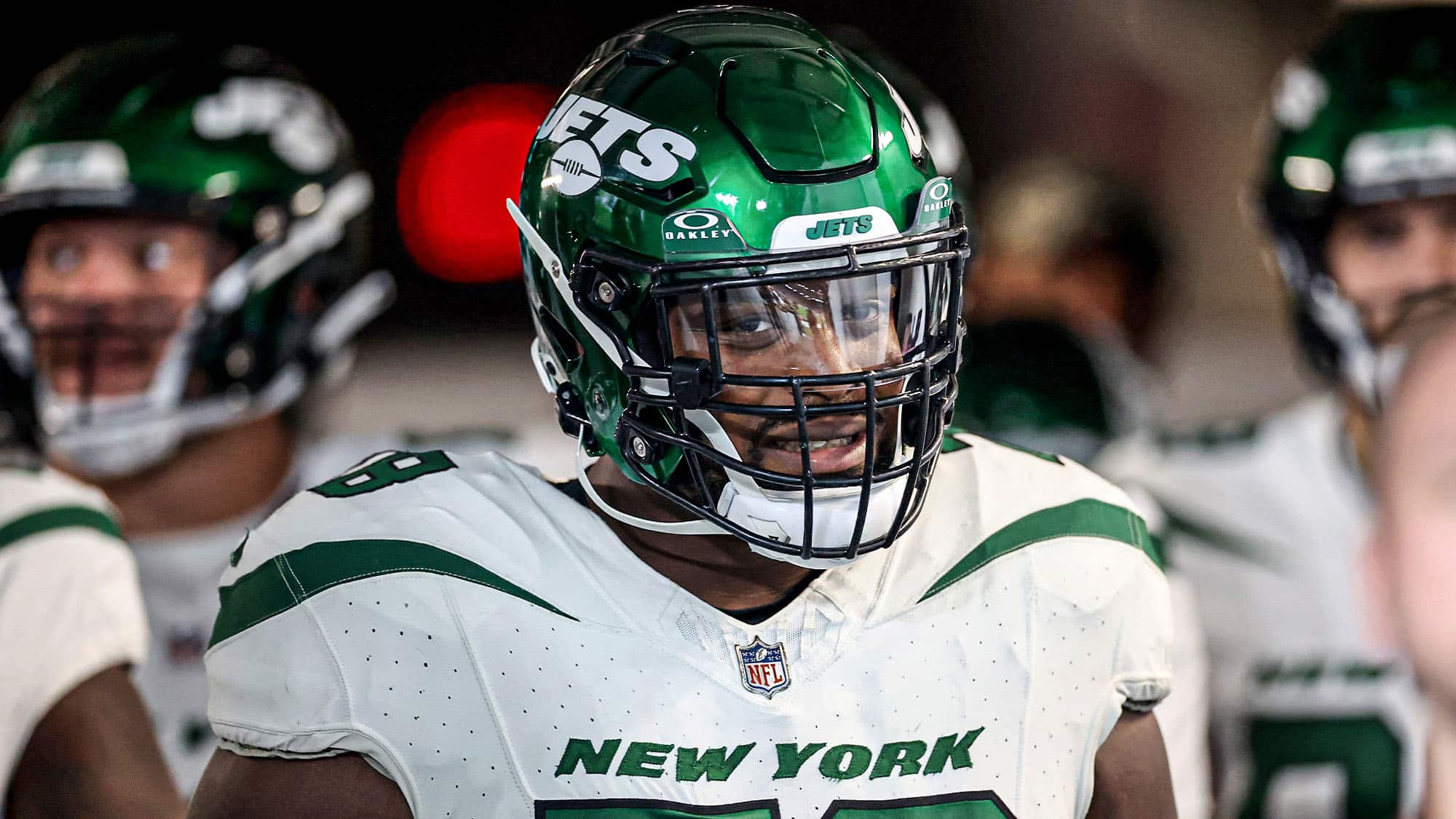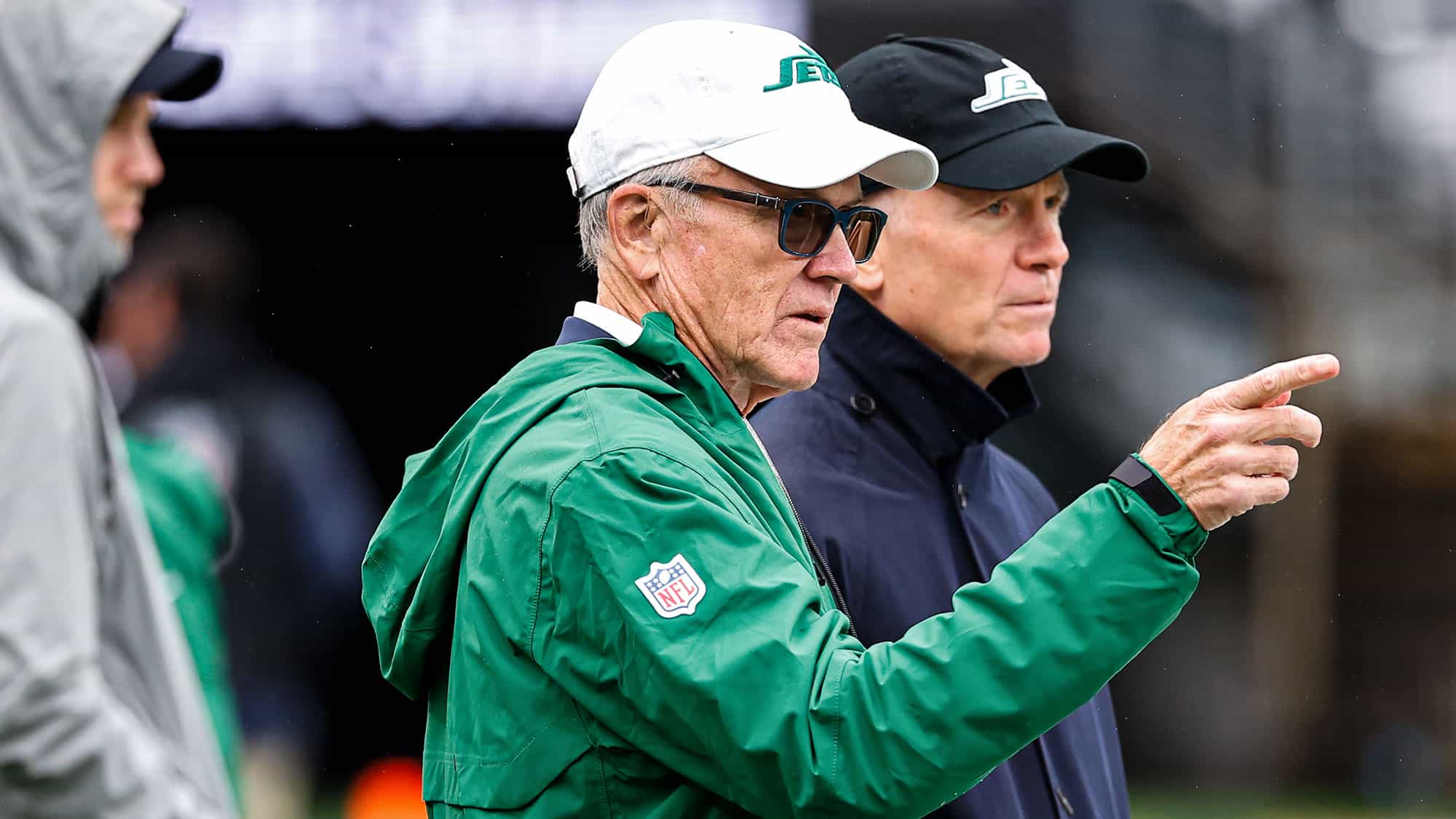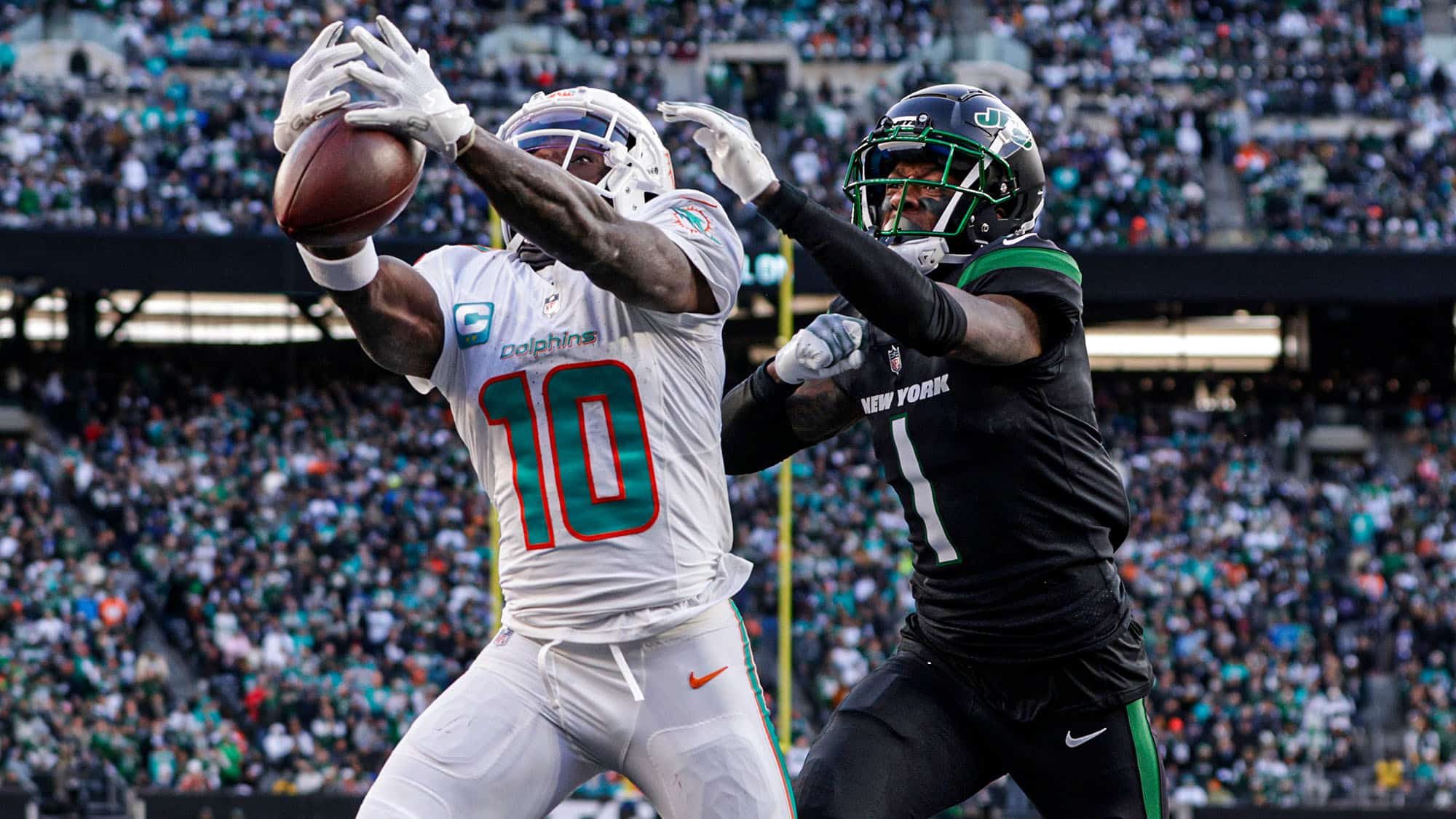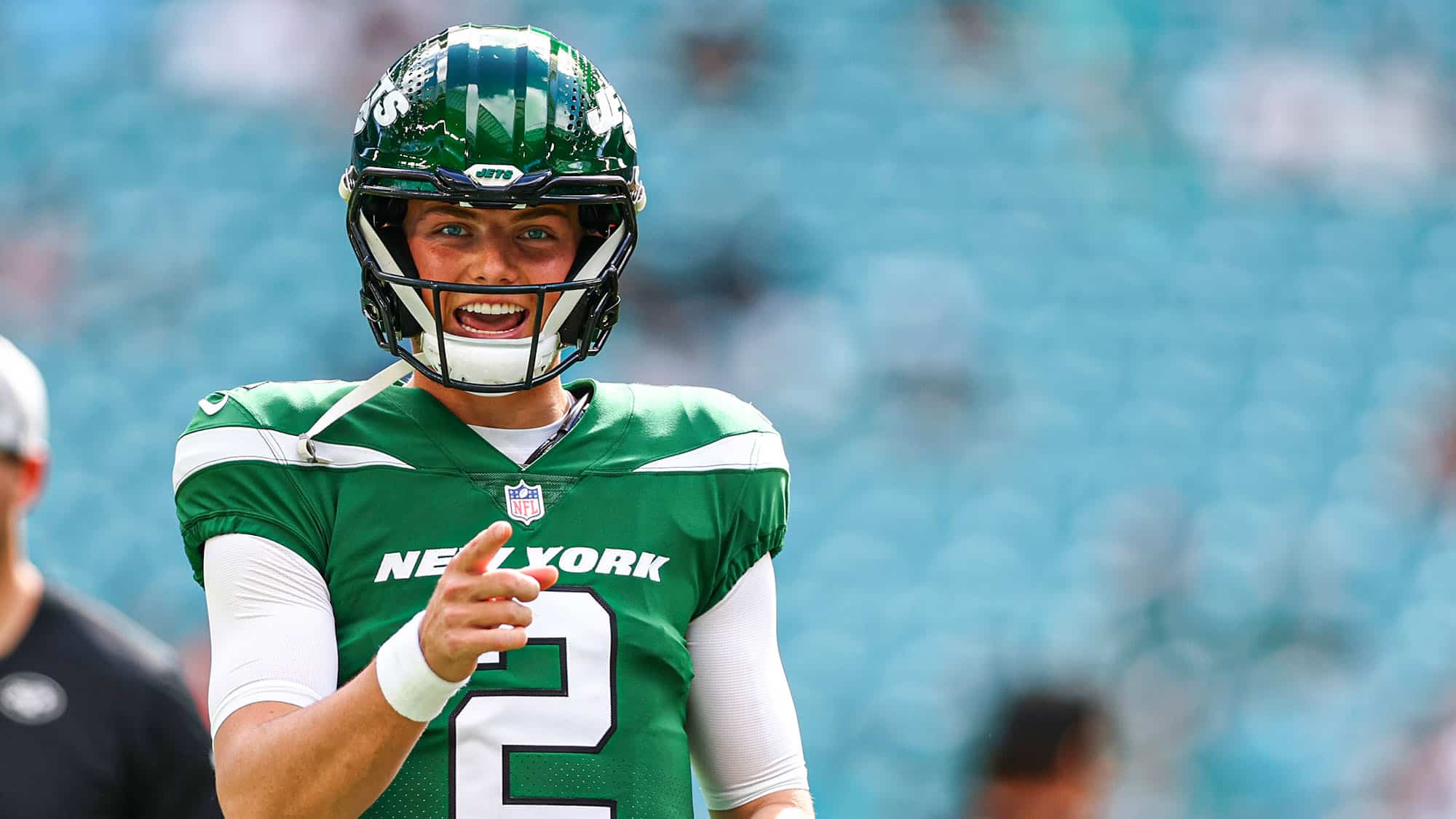Many misconceptions are floating around about the New York Jets’ salary cap in 2024
As the New York Jets‘ 2023 season mercifully comes to a close, fans have begun to discuss (ahem, argue) the team’s best path forward in the 2024 offseason.
Before any such evaluation, though, it’s critical to understand what resources the Jets do and don’t have available. There is a lot of misinformation circulating about the Jets’ salary cap numbers. Therefore, let’s evaluate the cap before we delve into who the team should seek to acquire.
Understanding June 1
The NFL’s league year ends on June 1. Therefore, releases or trades occurring after that date will have the dead cap charge split between the coming season and the following season. In the 2024 offseason, this means that any release or trade occurring after June 1 would split the dead cap charge between 2024 and 2025.
The way this split is initiated is by considering the player’s full remaining guaranteed money and bonuses. Rather than accelerating all future guaranteed money and bonuses onto the current year’s salary cap, only this season’s guaranteed money and bonuses are counted as dead cap for this season, while the remaining charge is pushed to next year.
To prevent an influx of player releases on June 2, thereby decreasing the players’ value on the open market, the NFL instated a rule allowing a team to release two players each offseason with a post-June 1 designation. This means that the financial ramifications are the same as if the player were released on June 2, but he can hit free agency much earlier.
It is important to note that there is no such mechanism when it comes to trades. To defer part of the dead cap charge to the following season, a team must trade a player after June 1.
Furthermore, this mechanism is for the player’s benefit, not the team’s. This means that while the player becomes a free agent at the moment of the release, the team does not reap the salary cap benefits until after June 1. Therefore, a team must still carry that player’s full cap hit until June 1 and still remain under the salary cap threshold.
Definitely on team
Aaron Rodgers
There’s not much the Jets can do with Aaron Rodgers’ 2024 contract. They can convert a little under $2 million into a signing bonus and spread it out over the contract (including the void years), but it would save them only about $400,000. Rodgers’ 2024 cap hit will be $17.2 million.
Allen Lazard
Allen Lazard is going nowhere because of Rodgers, which makes it difficult to ask him to take a pay cut. The Jets certainly can’t release him, as a pre-June 1 release would actually lose over $6.6 million, while a post-June 1 release would save nothing with a $12.2 million dead cap charge. They will need to wait until 2025 to let him go.
What the Jets could do is push a large chunk of Lazard’s base salary into the future, but that would make it harder to cut him in 2025. Whatever deferred money they added would become part of the dead cap charge for releasing him in 2025. Therefore, it’s likely the Jets will stand pat with Lazard’s contract.
Tyler Conklin
The Jets’ top tight end will definitely be on the roster, but Tyler Conklin‘s contract may be restructured once more. Right now, he’s scheduled for a $9.1 million cap hit in the final year of his deal with a $1.95 million dead cap charge in 2025. The maximum restructure would entail deferring $4.86 million of his salary, resulting in a $4.7 million cap hit in 2024 and $4.4 million in cap savings. The problem is that it would add $3.7 million in 2025 dead cap, making his total dead cap charge $5.65 million.
The Jets could just leave Conklin’s contract as is, but I suspect they’ll convert some money into a bonus and shave a little off his cap hit.
Quinnen & Quincy Williams
The Jets set up Quinnen Williams’ contract to start the restructure game almost immediately. His $20.4 million cap hit in 2024 will likely be reduced somewhat. He has a $14.4 million base salary; how much the Jets choose to clear likely depends on who else’s contract they restructure and what moves they make.
Quincy Williams’ contract can also be restructured, as he has a $6 million base salary and $6.9 million cap hit in 2024.
D.J. Reed
D.J. Reed has a $15.7 million cap hit in 2024 which the Jets will probably reduce somewhat. The smartest way to do it would be via a two-year extension and pushing some money into the future with the already-existing void years.
Likely on team
John Franklin-Myers
If the Jets cut John Franklin-Myers with a post-June 1 designation, they can save $13.9 million with just $2.5 million in 2024 dead cap (and an additional $6.6 million in 2025 dead cap). The same would apply with a post-June 1 trade. However, a pre-June 1 trade or release would save just $7.3 million with $9.1 million in dead cap. Therefore, it is most likely that Franklin-Myers will be a Jet in 2024.
However, if the team feels strongly about re-signing Bryce Huff or needs cap space for other purposes, they could attempt to trade Franklin-Myers after June 1 and recoup a significant amount of cap space.
It’s more likely that the team will restructure Franklin-Myers’ deal to save on his $16.3 million cap hit.
C.J. Mosley
C.J. Mosley‘s contract has been under discussion virtually every season since he signed it. The Jets’ cap took a severe hit from the fact that Mosley’s contract did not toll when he opted out of the 2020 Covid season. In 2024, the final actual year of his deal, his cap hit will be $21.476 million, just as it was this season.
If the team cut (or traded) Mosley before June 1, they would take a $14.9 million dead cap hit with just $6.6 million in cap savings. That will not happen. If the Jets cut or trade Mosley after June 1 (or with the designation on a cut), they would save $17 million in 2024 with just $4.5 million in 2024 dead cap (and an additional $6 million in 2025 dead cap). That latter scenario could be tempting for a team with so many needs at more premier positions.
Considering how much the Jets love Mosley, though, I think one of three scenarios will occur:
- Mosley will take a pay cut.
- The Jets will restructure his contract and defer more money into his void years.
- He will sign an extension to defer some of the money and also keep him a Jet at a more manageable price.
Right now, Mosley has two void years on his deal — 2025 and 2026 — with $2.976 million in dead cap each season. The Jets restructured his deal before the 2022 season but did not do so again in the 2023 offseason, likely because they wanted to preserve the flexibility to defer more money this offseason.
Mosley’s base salary in 2024 is $17 million (not guaranteed). What the Jets would likely do is take some of that and spread it out over five seasons, adding three more void years to his deal. How much base salary they would defer depends on what they do with other players.
Likely cut or traded
Zach Wilson
Reports indicate the Jets will try to trade Zach Wilson after this season. The return doesn’t even matter all that much at this point. Both team and player need to move on (as the Jets should have last offseason).
The only way the Jets can unload some of Wilson’s contract is by trading him. His $11.2 million 2024 salary is fully guaranteed, so cutting him, whether before or after June 1, would not save the Jets any cap space. If they trade him at any point, though, they can save $5.5 million with $5.7 million in dead cap.
That will most likely happen. Another team will take on Wilson for $5.5 million, saving the Jets that money in return for a late-round pick (perhaps a conditional one). Joe Douglas is likely to try what he did with Elijah Moore, trading Wilson plus a pick to get a higher one.
C.J. Uzomah
Douglas now reaps the rewards of having signed C.J. Uzomah to a ridiculous contract in 2022. It will presumably be impossible to trade Uzomah with his $8 million 2024 salary. A release would likely come before June 1 because of the limitation of a post-June 1 designation on only two players. That means the Jets would save $5.3 million with $5.9 million in dead cap. Considering that Uzomah was benched, the writing is on the wall that he will be released.
Question marks
There are four categories of players who are question marks: an underachieving veteran, an expensive free agent, underachieving players on rookie deals, and inexpensive free agents.
Laken Tomlinson
There is a misconception about how much money the Jets could save by releasing Laken Tomlinson. If they do not designate the release as post-June 1, they would save $8.1 million with $10.7 million in dead cap. However, if they cut him with a post-June 1 designation, they can save $13 million with $5.9 million in dead cap (there would also be a $4.9 million dead cap charge in 2025).
That’s a lot of money to save. As I’ve written before, the Jets could potentially sign a guard-and-a-half or a tackle-and-a-half with those savings. In my mind, it’s a no-brainer, but the Jets never seem to make no-brainer personnel moves.
Max Mitchell, Micheal Clemons
Max Mitchell has an 8.9% pressure rate and has a 49.4 PFF run-blocking grade, which ranks 73rd out of 81 qualified tackles (min. 125 run-blocking snaps). Mitchell’s run-blocking is worse on film than his grade would indicate, too.
While a good backup tackle is a rare commodity in today’s NFL, Carter Warren can easily replace Mitchell’s putrid work with some poor work of his own, as he has a better run-blocking grade (54.2) on 100 snaps and has a slightly lower pressure rate (8.1%).
There is no reason to carry two poor fourth-round tackles on the roster. Warren can be the Jets’ second backup tackle while they find a more competent swing tackle.
Micheal Clemons is an interesting story. He has played very poorly this season, posting just a 5.7% pressure rate (the average for starting edge rushers is 11.7%) while playing below-average run defense (64.3 PFF run defense grade, 41st out of 73 edge rushers, min. 150 snaps).
Still, he’s just one year removed from playing quite competently as an edge rusher, recording the best PFF run defense grade among 80 qualified edge rushers (86.4) while not missing a single tackle and also putting up a respectable (for a backup) 9% pressure rate.
Clemons’ weight gain from 272 pounds to 286 was the story of the offseason. It clearly worked to his detriment, though, as he lost the limited speed and twitch he had as a bigger edge rusher to begin with. The Jets could potentially try to have him go back down to 272, thereby hopefully restoring his effectiveness as a backup.
With Clemons’ $1.3 million cap hit in 2024, it would be helpful for the Jets to be able to retain him as a backup rather than having to sign one or use the little draft capital they have to select an edge defender.
Maximum cap space
Let’s take a scenario where the Jets restructure, release, and trade as many of the players above as possible. Here’s the maximum amount of cap space they can save before re-signing anyone. Keep in mind that this is not what they will do, but it’s what they can do. Also, since all players already have void years on their contracts, I will simply leave the void years they have rather than add more.
Restructures
- Lazard: $13.21 million savings
- Conklin: $3.74 million
- Quinnen Williams: $10.62 million
- Quincy Williams: $3.66 million
- D.J. Reed (just restructure): $7.53 million
- John Franklin-Myers: $9.73 million
- C.J. Mosley: $10.53 million
Trade
- Zach Wilson (after June 1): $5.45 million savings
Releases
- C.J. Uzomah (post-June 1 designation): $8 million savings
- Laken Tomlinson (post-June 1 designation): $13 million
- Max Mitchell: $1.1 million
Net cap space effect
- Maximum cumulative savings: $86.57 million
- Total cap space available: $103.35 million
- Players under contract: 33
- Effective cap space: $82.11 million
This number would come before re-signing any players, but the Jets would obviously require many players in this scenario.
Realistically, the Jets will not have close to this amount of cap space because they will not execute maximum restructures for all their players. Still, this is what they can do.
We’ll follow up with another article about how the Jets can allocate their resources in 2024. Still, the most important choice the Jets must make this offseason is to release Tomlinson and use the savings to rebuild their tackle position. They have the resources to fulfill their top needs, but the issue is not as much in 2024 as beyond.












My 2 cents:
I would not trade Zach Wilson. I liked the improvement he has made, his best game this season against the Texans was actually his 33rd start in the NFL which would have been his first game in his third season due to missing games to injury and poor play. I saw his timing improve, his accuracy & confidence improve and he matured before our eyes. I would love to bring in a Jacoby Brisset to truly provide competition for him in the off-season and training camp. But I think that the fire this kid has been through has actually helped him to the point where one more year behind Rodgers learning this offense & protection calls will make him even better. Developing QBs is hard work and takes time, why give away all the work that has been invested again.
I would love to see him against the Patriots if he fully healthy as this would be a great test to see how much he has improved.
I think you could say the same from Wilson’s point of view. Why should he trash all the hard work he put in only to have to learn a new system with new people, i.e., have to take two steps back? As you say, it seemed like the plan to give him a Hackett/Rodgers training and support team was finally starting to work. The sad part of it is that the pressure to trade him is mostly coming from the fans and media. Now that I think of it, though, I’m not sure how his team-mates feel about him. There was a lot of frustration…
He’s also stuck with the worst offensive coordinator in the NFL and a head coach whose conservative mindset further stunts any chance he has of growth.
Wilson’s improvement was not enough to have him be Aaron Rodgers’ backup quarterback. He’s also worn out his welcome in New York.
I wonder if the Raiders would be willing to trade for Wilson? Wilson is more experienced and probably has a higher ceiling than Aidan O’Connell, and he is even younger. Wilson would be going back closer to his home turf, with Utah right next door, so he would have his family/friends network more available, which seems to be important to him. Plus, I can seem him thriving in a dome and on a team with a strong run game. So, they could have a straight-up competition between O’Connell and Wilson for the starting job. Denver is also close by. Maybe the Broncos could think about a talented young back up to push Russell Wilson.
I think someone will trade for him for sure. What they get in return is the question at this point. Personally, I have a new respect for Zach. He took a beating, and everything that went wrong they blamed on him, yet I saw maturity. That’s not to say he is a good player but I hope he does well, clearly it’s time to move on from NY.
Yeah, I just wonder though if the Darnold experience is kind of a cautionary tale for some organizations. Maybe a lot of teams thought Darnold was just a victim of the Jets’ poor management and he could be salvaged, but that turned out not to be the case. That’s why I suggest selling him to Oakland and Denver if you’re the Jets, so they could at least argue that he would be going to a more comfortable environment for him where they would have a better chance of getting the best out of him.
You would think so, but the hubris of many teams allows them to believe they will be the ones to unlock the player’s potential. The 49ers somehow got a fourth-round pick for Trey Lance after even Kyle Shanahan could not get semi-adequate preseason play from him. First-round picks have nine lives in the NFL.
There are rumors that the Commanders would trade Sam Howell for Wilson. I’m skeptical, as Howell showed far more potential in the first half of this season than Wilson ever has. I would take that deal, though.
I doubt the Raiders would trade for him, but I think someone will.
Great breakdown. I would think they can extend Conklin in the same way you talk about DJ. He’s a good player and someone worth keeping around.
Side note: Trading Jamal Adams and Sam Darnold for what they got were no brainer moves, so sometimes they Jets DO make the “no brainer” moves…so I guess we can “debunk” that idea.
I would be on board with a Conklin extension. I think the Jets still underutilized him. I was looking forward to seeing him with Rodgers.
I was not pro trading Darnold until I saw the return, so I guess you could still say it was a no-brainer. The Adams trade was unbelievable and looks better with each passing day. Douglas’ moves since then have left a lot to be desired, though.
Like you I hope the Rogers addition makes better use of Conklin, I’m not sure if he was underutilized because they needed him to block etc.
Also, I didn’t know you were in the pro Darnold camp. Thanks for adding that, I too liked him, in the end I was wrong regardless of how it worked out with Wilson. I think moving on from Darnold was “the move” meaning the only other “move” was to draft Wilson. I don’t blame Douglas for that, like you said about Wilson, Darnold had worn out his welcome.
Good news, Rogers will be back so there is some light. We rarely agree, however I admire your passion. You hate Saleh, I like him haha….that said he is to blame for not adding the proper offensive staff. I also don’t think tearing things down with the D hitting its stride is the move…do you think there is a way to fix the offensive staff without cleaning house?
I wrote an article in the offseason about how the Jets underutilized Conklin last year because they had to use him to chip. The same thing happened this year.
I was not working here when Darnold was traded. I was not pro-Darnold because I thought he would be good, although I did think there was some possibility he could improve with a better supporting cast. I simply was not a fan of drafting any quarterback into the cesspool that was that Jets’ roster. I figured that if they traded down, they could recoup a haul and then perhaps build up the offense enough to give Darnold more of a shot. I was also not a big fan of Wilson due to his poor footwork (at the time, that was the first thing I looked for in a college QB).
The best way to fix the offensive staff is to fire everyone besides Hackett and, ideally, bring in a co-offensive coordinator/passing game coordinator who also calls plays. That way, Hackett keeps the title but doesn’t call the plays, because he’s the worst play-caller I’ve ever seen (and his father is the first Jets OC I remember).
I agree…keep Hackett but the OL, and QB coaches NEED to go first. Downing has added NOTHING, and the WR’s have been trash for years. They have been hanging on WAY too long to Calabrese. I don’t think Hackett gives up the play calling and assume Rogers will have more say, which I think is the best bet for “co” play callers.
I didn’t like the BYU thing with Wilson, although I’ve defended him, and didn’t think he was better than Darnold. Like you, felt could have had a haul to try and build around Darnold. But…as with Zach, the media and fan base would never allow it. The problem is it’s all his fault.
Not all of them…Rogers was a good move (Even though he got hurt). DJ was a great move. Q Jefferson was a great move. Signing Conklin was a good move, signing Quincy turned out to be an outstanding move. Yes, he’s missed on some big ones…Laken…Lazard, but that’s the game. They all miss.